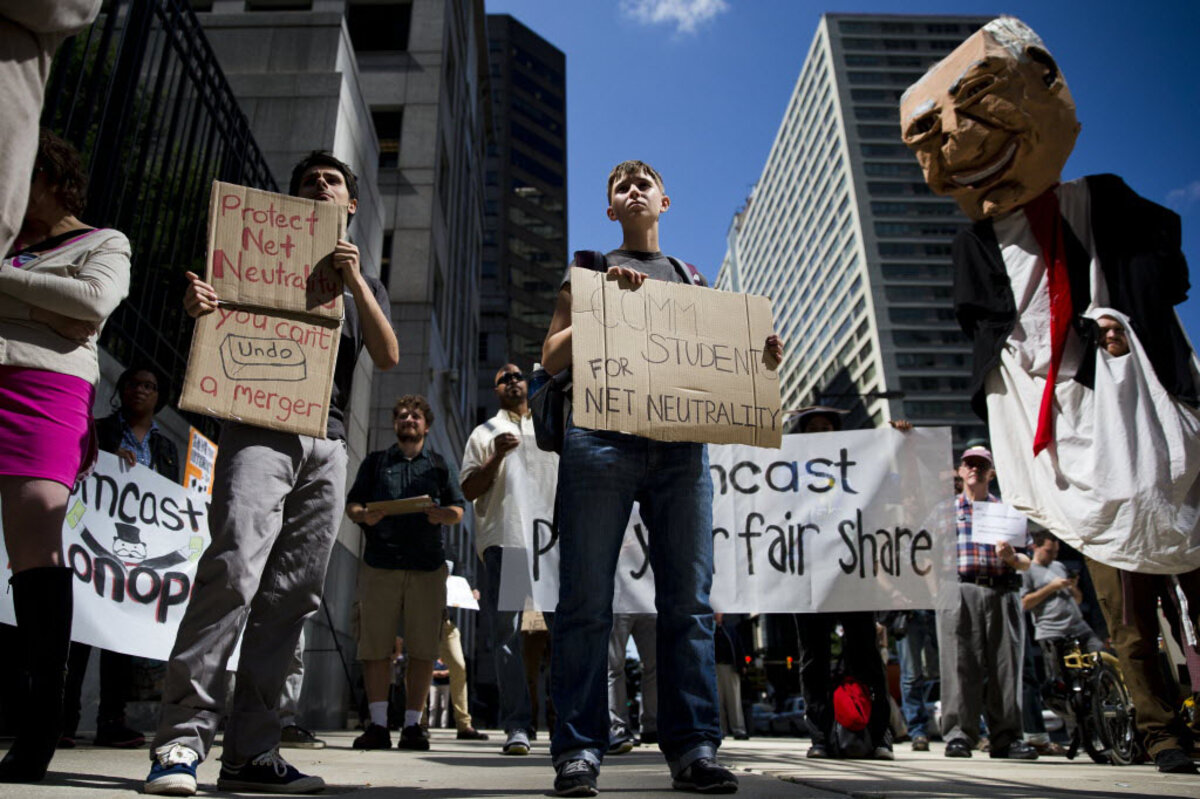Net neutrality: A top target for Trump's FCC?
Loading...
Add internet access to the list of issues that the Trump administration wants to handle differently.
On Friday, , Bloomberg, and other news outlets quoted unnamed industry sources saying that President Trump has selected Ajit Pai to chair the Federal Communications Commission. No official announcement has come yet. But Mr. Pai, who previously served on the FCC’s five-member board after stints at Verizon and the Justice Department, is a vocal critic of the agency’s current “net neutrality” policy.
“Net neutrality, or an open Internet, is the concept that ISPs [internet service providers] should give consumers equal access to all legal content and applications. That means ISPs could not favor or block some content-makers or charge them to provide faster delivery of their content, in what are known as ‘fast lanes.’” When ���Ǵ���'s Cristina Maza explained net neutrality in February 2015, the FCC had just adopted the policy, with support from consumer groups, internet firms such as Google and Netflix, and the Obama administration.
But the move was opposed by Pai. The agency’s decision amounted to “join[ing] together the 21st century Internet with 20th century legislation,” he last February.
Pai was referring to the fact that the FCC mandated net neutrality under the auspices of the 1934 Telecommunications Act, and that the web complexity far surpasses the telephone and telegraph networks of the 1930s. Today’s disagreements on net neutrality reflect the Internet’s wide range of stakeholders.
Supporters of the policy want ISPs, such as Comcast or Verizon, to serve as impartial gatekeepers to the Internet. This helps consumers, who can access the internet’s full range of content for a flat monthly fee. It also benefits the likes of Facebook and Amazon – and the startup firms that hope to follow in their footsteps – who don’t have to negotiate with ISPs or pay extra for faster speeds.
But some ISPs have shown an interest in what Pai calls “usage-based plans,” tailoring rates based on visits to certain sites and use of certain services, such as video streaming or mapping. In 2010, “Pro-net neutrality groups have argued that the carriers will try to make more money by ... discriminating against content they compete with.”
Pai has seen things differently. When the FCC board voted to adopt net neutrality in 2015, he wrote that,
“The more difficult the FCC makes the business case for deployment – and micromanaging everything from interconnection to service plans makes it difficult indeed – the less likely it is that broadband providers big and small will connect Americans with digital opportunities. And neither big nor small providers will bring rural and poor Americans online.”
Some observers agree. In a , David Talbot focused on the 34 million Americans who still lack home broadband service. “Cutting red tape to help install fiber [optic lines] and then adopting flexible service models to facilitate competition could...finally help end the digital divide across the United States,” he wrote.
Expanding internet access and keeping ISPs from favoring certain types of content may not be irreconcilable goals. A recent report from the Pew Research Center found that the percentage of Americans with broadband at home in early 2015. Connection speeds are also .
But with Pai – who to FCC regulations – net neutrality may be the first to go.
Reporting from the Associated Press was used in this story.





